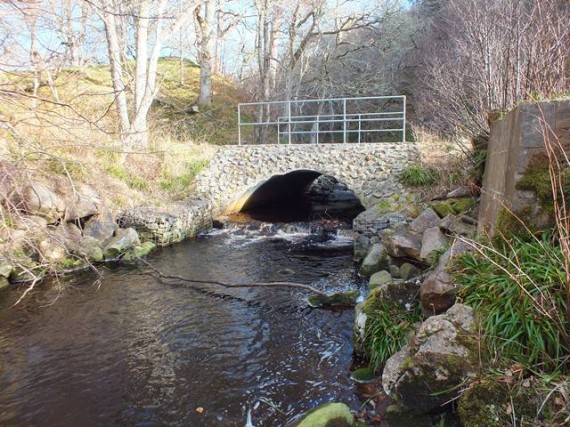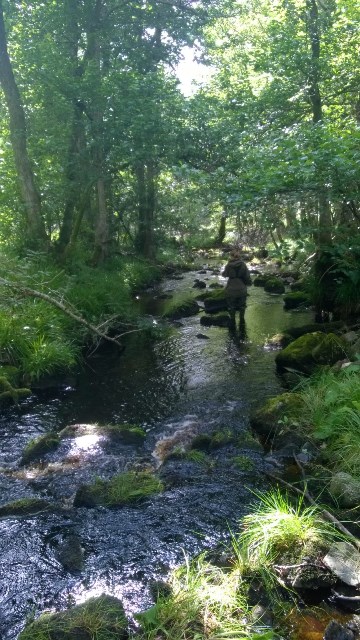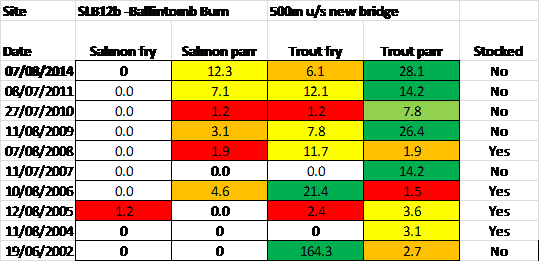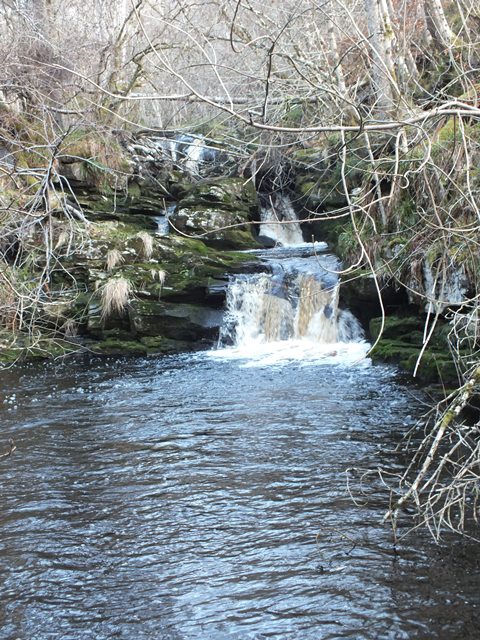In order to improve fish passage up the Ballintomb Burn the “Irish Ford” pipe bridge across the lower reaches was replaced with a proper bridge in 2004 as part of the LIFE project. The Ballintomb Burn is noted for its dark peaty water, in fact yesterday you couldn’t see the bottom if it was more than about 6″ deep.
I had never surveyed the Ballintomb Burn before but as we are currently trying to balance the electrofishing survey plan with the need to prepare for forthcoming meetings etc Polly, Kirsteen and myself nipped out to fit in two surveys in close proximity to the office yesterday afternoon.

The new bridge over the lower reaches of Ballintomb Burn, constructed as part of the CASS LIFE project
The survey site in the Ballintomb Burn was described as “500m upstream of Irish Ford”; a vague description, but the site photos combined with the GPS allowed us to find the exact survey site with little difficulty. As in many burns with a high level of tree cover the rocks were very slippery with algae; along with the dark water it was tricky wading.

Site SLB12b in the Ballintomb Burn. This is quite a high gradient area with a high percentage of boulders.
We caught quite a few fish including 10 salmon parr.

Kirsteen measuring the catch. I thought the water looked tea coloured, others suggested it was like Vodka and coke - it’s a generational thing I suppose!
There a decent history of surveys at this site, mainly due to the involvement of the LIFE project, and it is pleasing to see that quite an improvement in the fish stocks have been recorded.

Both salmon and trout densities have improved post bridge construction. Yesterday’s parr densities for both species were the best to date. Fry numbers are generally low at this site, probably due to the gradient and rough substrate, although the trout obviously did well in 2002.
There is only a short length of the Ballintomb Burn available to migratory fish due to the presence of a large set of waterfalls. The gains from the investment made by the LIFE project were therefore relatively modest but by making it accessible to migratory fish returns will occur now and for evermore more.

Shepherd’s Linn on the Ballintomb Burn. This photo was taken in the winter, note the clear water.
Spey Fishery Board
